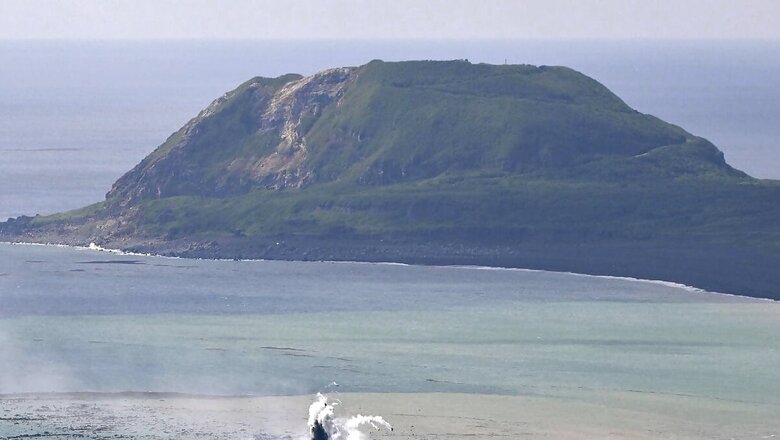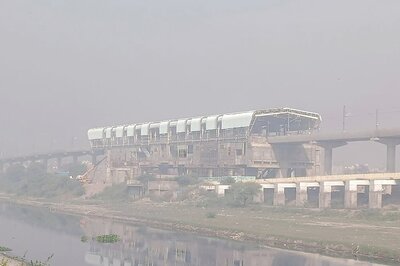
views
The world’s newest island has been formed off the coast of the Japanese island of Iwo Jima in the Pacific Ocean following an undersea volcanic eruption around 1,200 km south of Tokyo.
The unnamed undersea volcano, located about 1 kilometre off the southern coast of Iwo Jima, started its latest series of eruptions on October 21.
The Japan’s Meteorological Agency (JMA) said the unnamed island was formed after it rose from the ocean and was documented in pictures taken by the country’s Maritime Self-Defense Force on November 1.
How was the Island Created?
Japan’s Meteorological Agency has been recording volcanic activity in the area since last year, but the Earthquake Research Institute of the University of Tokyo confirmed the island-forming eruption took place on October 30.
The new island emerged off the coast within a mere 10 days, as volcanic ash and rocks accumulated on the shallow seabed. The tip of the newly formed island rose above the sea surface, creating a landmass approximately 100 metres in diameter and towering as high as 20 metres above the waterline, Yuji Usui, an analyst in the Japan Meteorological Agency’s volcanic division, said.
A report in The Guardian quoting Fukashi Maeno, an associate professor at Tokyo University’s earthquake research institute, said the island was created due to phreatomagmatic eruptions – a type of explosive eruption that results from magma interacting with water – which occurred about a kilometre off Iwoto, forming a landmass of about 100 metres in diameter.
The Island is about 1,200 from mainland Japan and a kilometre from Iwo Jima Island, which saw some of the fiercest battles of World War II in the Pacific. At the island, US Marines fought lakhs of Japanese stationed there in a battle that killed more than 7,000 Americans and 22,000 Japanese troops.
Will the Island Survive?
Experts are still analysing the development and other details of the deposits. The new island could survive longer if it is made of lava or something more durable than volcanic rocks such as pumice.
Yuji Usui said the scientists are closely monitoring the new island’s formation, investigating the composition of the landmass to determine its durability.
“We just have to see the development,” he said. “But the island may not last very long.”
Undersea volcanoes and seismic activities have formed new islands in the past. In 2013, an eruption at Nishinoshima in the Pacific Ocean south of Tokyo led to the formation of a new island, which kept growing during a decadelong eruption of the volcano.
Of about 1,500 active volcanoes in the world, 111 are in Japan, which sits on the so-called Pacific “Ring of Fire,” according to the Japan Meteorological Agency.
The island sits about 1,200 kilometers (750 miles) south of mainland Japan and a kilometer from Iwo Jima, the island that saw some of the fiercest battles of World War II in the Pacific.
US Marines fought tens of thousands of Japanese garrisoned there in a battle that killed more than 7,000 Americans and 22,000 Japanese troops.


















Comments
0 comment